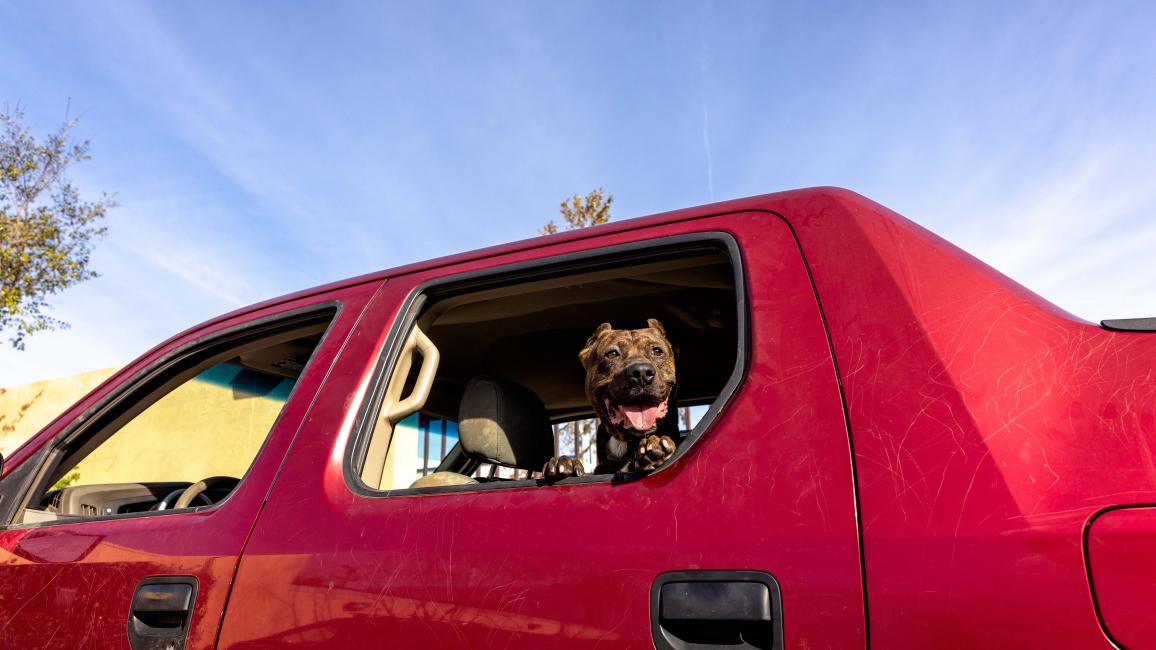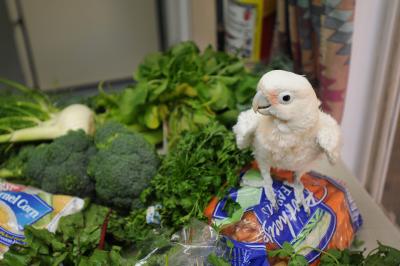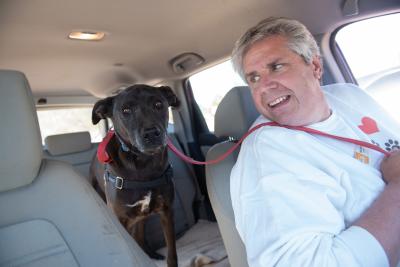Ask Faith: Help for a pasta-loving parrot and a dog afraid of the car

Editor’s note: Faith Maloney, one of the founders of Best Friends Animal Society, consults on various aspects of animal care at the Sanctuary. In the early days of Best Friends, she started Dogtown and spent much of the day involved in the direct care and feeding of the animals. She’s also a frequent contributor to Best Friends magazine. The following advice was originally published in her Best Friends column, “Ask Faith.”

What do you feed a parrot who needs to lose weight?
Dear Faith:
Paco, a 42-year-old Amazon parrot, came to live with me at my house. He is somewhat shy, so I’ve been bonding with him by giving him treats. He loves pasta, toast and cashews. I took him to the vet for the first time, and the vet said that Paco is overweight and should be put on a diet. How do I make sure I’m feeding Paco the right food so he loses some weight?
– Doubtful about dieting
Dear Doubtful:
Amazon parrots are known for their love of food and, as a consequence, they often become overweight. Years ago, people believed that parrots should be fed a diet of seeds, but new research revealed that seeds are high in fat. In the wild, parrots do eat seeds, but they also burn a lot of fat through flying and foraging. That’s not the case for parrots living in homes.
Companion parrots like Paco require a daily diet consisting of a high-quality pellet food along with a variety of fresh vegetables. Parrots can enjoy human food as treats, but in moderation. Suitable examples are unsalted nuts, plain Cheerios, plain popcorn and noodles. Keep in mind that parrots can become sneaky — refusing their staple diet and holding out for treats.
[Healthy Parrot: Diet, Nutrition, Toxic Foods]
During Paco’s weight loss period, I suggest holding back on the nuts, which (like seeds) are high in fat, and sticking to a healthy diet of pellets, a variety of fresh vegetables and a small amount of fruit. Enjoy your new life with Paco. He will bring you lots of joy and entertainment.

Help for a dog who’s afraid to get into the car
Dear Faith:
Earlier this year, I got a seven-year-old goldendoodle from a breeding kennel. Serena is a very gentle soul and won my heart the minute I met her; however, her life in the kennel was very structured and limited. The only time she went for car rides was when she was going to the vet, so she’s extremely fearful about getting into a vehicle. I cannot get her into my van without a struggle. Serena has two major vet appointments coming up, one for teeth extraction and cleaning and the other to be spayed. Do you have any tips on how I can make this a better experience for Serena?
– Hoping for serenity for Serena
Dear Hoping:
Many dogs lack positive associations to car rides because when they do go for a drive, it’s to the groomer or veterinarian, outings they may not like. We can help most dogs feel better about car rides by teaching them to associate the car with good things.
[Dog Car Anxiety and Fear of Car Rides]
First, see how close to the car you can get before Serena starts showing signs of fear. Some dogs won’t go near it, others will be fine until the door opens and others will get in, but freak out when the engine starts. Serena’s starting point is the place where she begins to show fear. Follow these steps over a period of days:
- Take her to the point where she’s starting to show discomfort. Feed her some treats for a few minutes, then go do something Serena enjoys.
- Repeat a while later. When Serena seems less fearful at her starting point, take the next step. For example, if she’s comfortable being near the car, try opening the door and observe her reaction. Give her more treats.
- When she’s OK with the door being open, put some treats on the floorboard or seat of the car for her to retrieve, moving the treats farther inside the car as she gets more comfortable.
- You might be tempted to close the door as soon as she gets in the car, but that’s not the goal. The goal is for her to feel comfortable and safe. So, practice getting in and out of the car, gradually lengthening the time that she spends in the car. Remember to give treats and praise the whole time.
- When Serena is playing the in-and-out game happily, then you can start adding in closing the door.
- When you’ve worked up to closing the door without Serena being uncomfortable, walk around and get in the driver’s seat, and turn on the engine. Watch how she reacts. If she shows fear or anxiety, back up to the previous step.
- When she’s fine with being in the car with the engine running, take a very short ride. As always, be generous with praise and treats. Lengthen the duration of the rides as Serena becomes more comfortable.
For the car rides, consider getting a LickiMat, a textured flat silicone mat on which you can smear canned dog food or peanut butter so that Serena can enjoy a treat as you drive. Another idea for your first few drives is to take a second person along to keep an eye on her and dole out some treats. Once Serena is riding comfortably in the car, you can try going fun places – to Starbucks for a Puppuccino or to a park for a nice walk.

Pet stories delivered to your house
This article originally appeared in Best Friends magazine. You can subscribe to the magazine by becoming a Best Friends member.